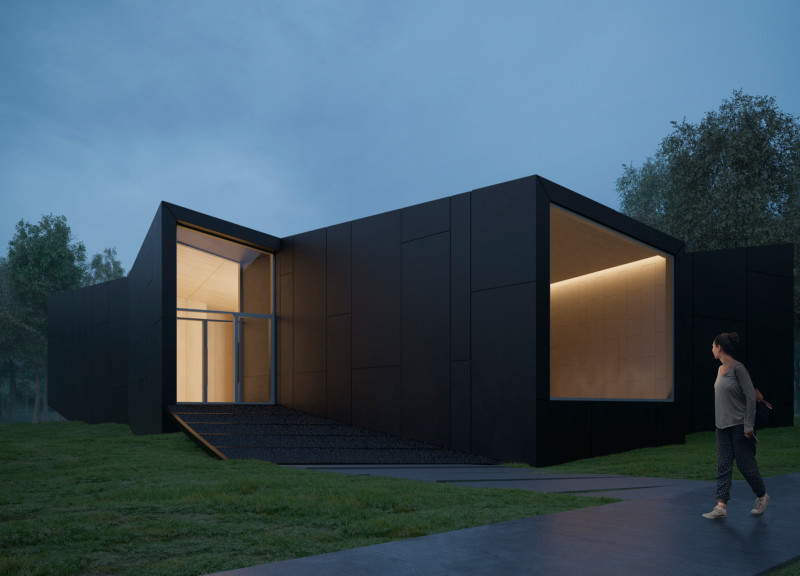5 key facts about this project
The primary function of the Stone Barn Meditation Camp is to provide a sanctuary for meditation and relaxation, integrating spaces that cater both to individual contemplation and group activities. The architecture embodies simplicity and functionality, allowing users to engage freely with the environment. The layout of the project is carefully structured to promote a journey through various experiences, from solitary reflection to communal interaction. This sequential organization of the camp enhances the visitors’ experience, allowing them to discover the site organically.
Key components of the design include meditation buildings that are grounded within the landscape, outdoor areas designed for mindful practice, and communal spaces that foster socialization and connection among visitors. The main building serves as the heart of the camp, featuring guest accommodations, kitchens, and shared dining areas, with large windows allowing natural light to flood the spaces and offer views of the beautiful natural surroundings. These design decisions help to blur the lines between indoor and outdoor living, creating a cohesive experience that deeply connects guests with the natural environment.
The use of materials in the Stone Barn Meditation Camp reflects a thoughtful consideration of both aesthetics and sustainability. Natural stone lends a tactile and visual quality to the structures, ensuring they blend seamlessly into the landscape. Wood is extensively used for interior elements and external facades, providing warmth and reinforcing a sense of comfort. The inclusion of glass elements creates expansive views and enhances the interaction between indoor spaces and the natural world outside. Additionally, durable zinc composite panels are utilized for their modern appeal while maintaining practicality and protection from the elements.
A unique aspect of the design is its modular approach, which provides flexibility for future adaptations or expansions, encouraging the camp to evolve with its community. The project emphasizes sustainability, featuring water management systems, solar panels, and structured gardening programs to support ecological awareness. These elements not only cater to the needs of the visitors but also contribute to a greater understanding of environmental stewardship.
The Stone Barn Meditation Camp stands as a noteworthy example of contemporary architectural design that prioritizes human experience, community, and ecological responsibility. Its location, layout, and materials combine to create a meaningful space for mindfulness and healing. For readers interested in deeper insights into this project, a review of the architectural plans, sections, designs, and innovative architectural ideas showcased here can provide further understanding of the unique attributes that define this compelling retreat. Exploring these elements will enhance one’s appreciation of the delicate balance between architecture and nature that the Stone Barn Meditation Camp embodies.


























